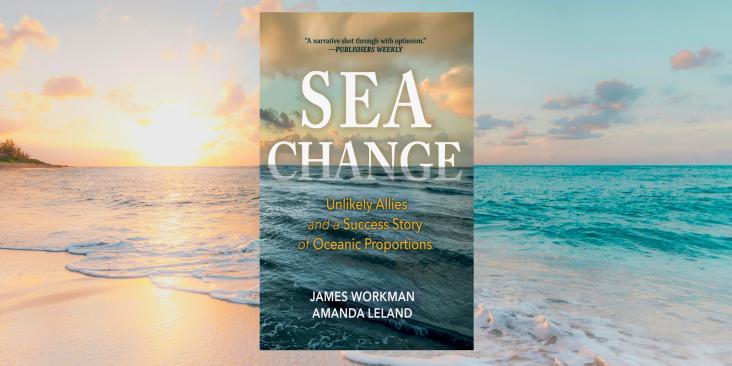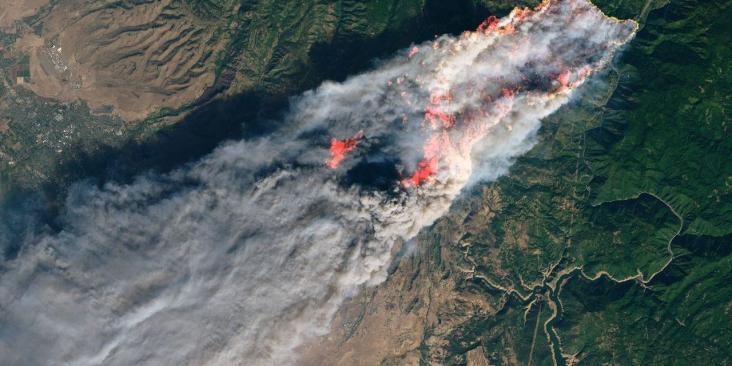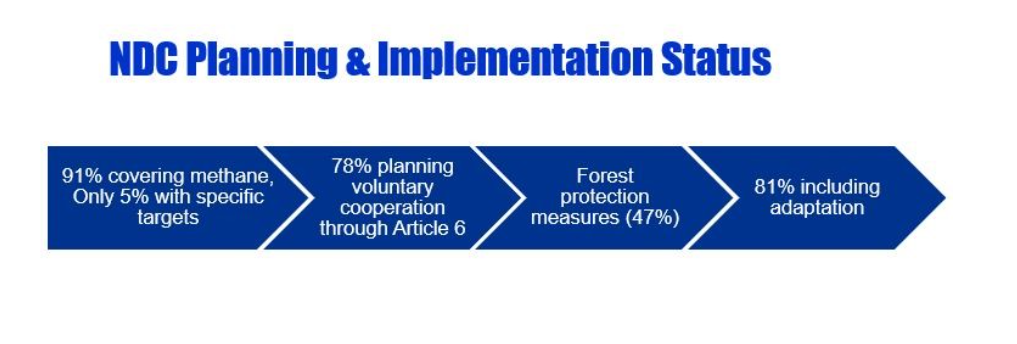The United Nations Framework Convention on Climate Change (UNFCCC) published the NDC Synthesis Report this week. The report assesses the combined impact of nations’ current national climate plans (NDCs) on expected global emissions in 2030, among other measures.
The report concluded that the full implementation of all latest NDCs is estimated to lead to a 5.9 (3.2–8.6) percent emission reduction by 2030 relative to the 2019 level. This falls short of what the planet requires.
While the emissions gap remains concerning, the latest NDC Synthesis Report reveals important trends and opportunities as countries prepare their next round of climate commitments. These trends point to a growing maturity in climate action planning and implementation, offering pathways to accelerate ambition and action. The synthesis reveals significant momentum in methane abatement, nature-based solutions, agricultural transformation, and ocean protection, though important gaps remain.
- Integrated, Whole-of-Society Climate Action: Countries are increasingly adopting integrated approaches to climate action, with stronger recognition of nature-based solutions and ecosystem-based adaptation. The synthesis shows growing alignment between climate action, biodiversity conservation, and sustainable development objectives. This integration extends to disaster risk reduction and resilience building, suggesting a more comprehensive approach to addressing climate challenges.
- Strengthened Planning and Implementation: The report highlights significant progress in institutional frameworks, with 97% of Parties providing detailed NDC planning processes. Notably, 48% have integrated climate targets into national legislation, while 56% have established specific policy instruments for implementation. The growing institutionalization of climate action – with 88% indicating robust domestic arrangements for coordination and implementation – suggests countries are building stronger foundations for enhanced climate action.
- Indigenous Peoples and Local Communities at the Forefront: A marked shift toward inclusive climate action is evident, with 60% of Parties now acknowledging Indigenous Peoples in their NDCs. Beyond recognition, countries are developing specific support mechanisms, including improved access to finance, capacity building for Indigenous-led climate action, and enhanced market access for Indigenous products. This trend acknowledges both vulnerabilities and the crucial role of traditional knowledge in climate solutions, though opportunities remain for stronger inclusion in decision-making and implementation.
- Market Mechanisms and Article 6 Readiness: Countries demonstrate growing interest in carbon markets and cooperative approaches, with 78% planning to use some form of voluntary cooperation – up from previous years. While 12% make Article 6 use conditional for achieving targets, there’s increasing emphasis on quality criteria, including additionality, permanence, and avoiding double counting. This signals the need for robust frameworks supporting market mechanisms, including clear accounting rules and monitoring systems.
- Methane Action Opportunity for Quick Wins: With 91% of Parties covering methane emissions but only 5% setting specific targets, there’s significant potential for enhanced methane action. Countries identify opportunities across waste management, agriculture, and oil and gas operations. However, implementation gaps in monitoring and measurement need addressing, alongside increased financial and technical support for methane reduction initiatives.
- Feedback loops and impact learning as Strategic Opportunities for Enhancement. While 53% are developing measurement and verification systems, only 3% plan to use feedback for future NDC preparation. This highlights a critical opportunity to strengthen learning and adaptive management in climate action. Enhanced monitoring frameworks could improve effectiveness and support evidence-based policy adjustments.
- Nature-Based Solutions key to climate action: Nearly half of Parties (47%) now include forest protection measures, signaling growing recognition of nature’s role in climate action. The potential is significant – reducing deforestation alone offers 2.28 GtCO2e/year in mitigation potential. While integration of nature-based solutions is increasing, frameworks for wildfire prevention and ecosystem monitoring remain underdeveloped. Enhanced financing mechanisms and stronger coordination between national and local conservation efforts could unlock greater potential in this sector.
- Agricultural Transformation in the horizon. Food security emerges as a critical priority, with 90% of Parties identifying it in adaptation planning, which is consistent with the COP28 Food Declaration. Countries are increasingly adopting sustainable agricultural practices, including crop diversification and improved soil management, often integrating traditional knowledge. However, specific emission targets and monitoring systems for agriculture remain limited. Opportunities exist to strengthen food waste reduction, improve irrigation systems, and develop more resilient food systems through better supply chain integration.
- Ocean Action growing attention: Ocean-related commitments show encouraging growth, with 31% of Parties identifying marine ecosystems as adaptation priorities. Blue carbon initiatives are gaining traction, with 21% of Parties including ocean carbon priorities. While 13% have quantified fisheries targets, gaps persist in marine ecosystem monitoring and financing. Promising opportunities exist in mangrove restoration, marine protected areas expansion, and coastal protection enhancement.
- Adaptation is now integrated into NDCs. Adaptation has become central to climate action, with 81% of Parties including adaptation components. This reflects a maturing understanding of climate resilience, particularly in key sectors like food security, water resources, and ecosystem management. While 29% of Parties now link adaptation with mitigation co-benefits, implementation gaps remain in financing, monitoring, and cross-sectoral integration. Strengthening these linkages, alongside better alignment with development goals, presents a key opportunity for enhanced climate action.
The synthesis reveals a maturing climate action landscape with growing emphasis on implementation, inclusion, and integration. While gaps remain, these trends provide a foundation for enhanced ambition and accelerated action in the next round of NDCs.










